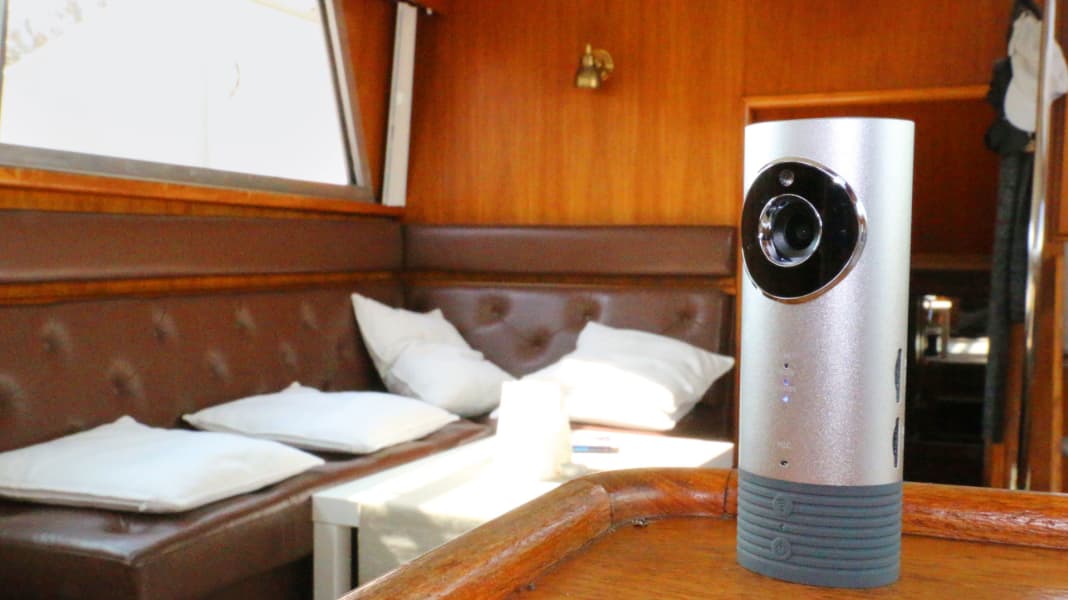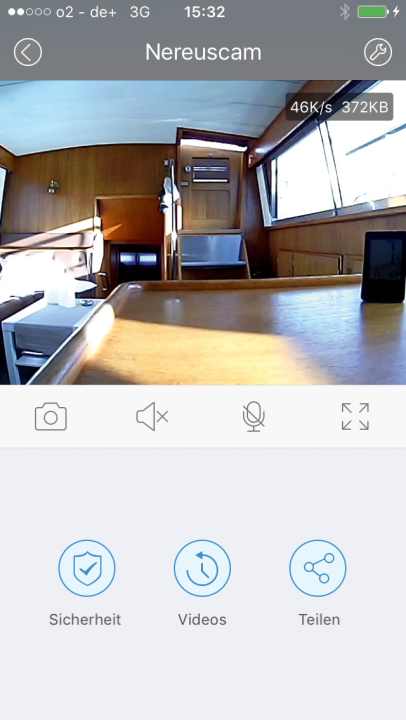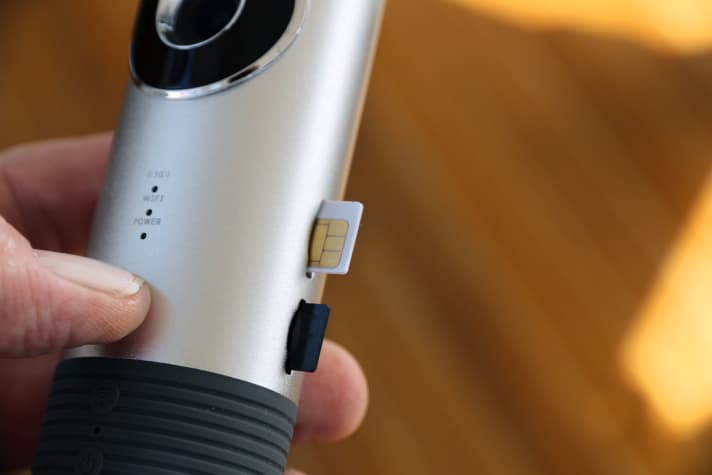
Further parts of the winter series:
- Winterising in the water - how to keep your berth ice-free
- Dehumidifier - keeping the air on board dry
- Antifreeze - it's all about the right mixture
- Heaters - alternative heat sources for your boat
- Remote monitoring via camera - everything in view
If you don't want to let your boat out of your sight even in winter, an Internet-supported surveillance camera, or IP camera for short, is a good choice. But what if there is no WLAN available in the harbour? Or if the harbour master simply does not allow a private IP camera to be operated on his network?
There is also a solution for this case. We are talking about so-called GSM cameras. We have tried them out. Essentially, these devices work in exactly the same way as an IP camera. The only difference is the wireless network used and the possible additional functions. While pure IP cameras rely on a WLAN with the necessary infrastructure (router), GSM cameras also use the normal mobile phone network in addition to the WLAN.
Advantage: Thanks to their independence from external digital infrastructure, GSM cameras also work outside the WLAN range. This means that they theoretically work wherever a mobile phone network is available - even abroad or in winter storage. What's more, you don't have to ask anyone for permission as long as the camera only monitors your own boat and not public areas such as the jetty or neighbouring boat.
Disadvantage: In addition to the obligatory power supply, the GSM camera requires its own SIM card. Depending on the network operator, the running costs are also higher than for WLAN cameras.
So much for the theory. To try it out in practice, we bought the IPC 600 GSM surveillance camera from Visortech from an electronics retailer. We tested it on a boat in the water during the winter months.
For the purchase price of around 130 euros, the IPC 600 offers a whole bundle of useful functions:
- WLAN and 3G compatible
- Video transmission in real time
- Operation via free app
- Memory card slot
- 2-way communication (mobile phone-boot-mobile phone)
- Motion detection
- Emergency power battery
What is missing from the scope of delivery is a power supply unit for 230-volt operation. We used a discarded mobile phone charger with a micro USB connection as a replacement.
The duty: remote monitoring via WLAN
If you believe the manufacturer's specifications, the Visortech GSM camera comes "configuration-free" out of the box. A layman would probably interpret this as follows: Plug in the power supply, switch on the camera, view the images on your mobile phone.
But it's not quite that simple. In order for the camera and mobile phone to get along, you first need the corresponding app. "Clever Dog" can be downloaded from the App Store (iPhone) or the Google Play Store (Android mobile phones). Once this has been successfully done and installed on the mobile phone, a comparatively simple registration process follows. You need to enter your e-mail address and set a password. Now, and this is important, insert a micro SD memory card into the camera. The first start-up will not work without a storage medium.

Then connect your mobile phone to the camera's WLAN under "Settings". According to the instructions, a few basic settings must be made. The next step is to use the app to connect the camera to the harbour's Wi-Fi. So: select the harbour Wi-Fi under "Wi-Fi settings" in the app, enter the password and you're done. Once everything has worked, you can now see the current camera image by opening the app on your mobile phone.
You can choose between "live images", i.e. live video transmission, or photos that have already been saved. The camera takes these automatically as soon as it detects movement in the "field of view".
Special features of remote monitoring with a camera on a boat
And this brings us to the first sticking point of a motion-detecting surveillance camera on board a boat. If you are monitoring your boat from the outside, for example from a neighbouring ship, the usual swaying at the berth is enough to start a silent alarm, i.e. image recording. If the corresponding function is activated in the Clever Dog app, which is the case by default, you can hardly save yourself from receiving warning messages on your mobile phone. One solution to this problem is to set the sensitivity of the motion sensor. This can be selected between "High", "Medium" and "Low". During our test, however, even small changes in the boat's position were enough to trigger the camera, even at the lowest sensitivity.
A new camera location was the only real remedy. In the second attempt, we positioned the surveillance camera inside our own boat. It monitored the saloon and the access door in particular. It worked perfectly here. It only sent alerts to the mobile phone if people were actually moving in the field of vision.
Once you have received such a message, you can switch on live, start the sound transmission and even actively intervene in what is happening. To do this, the intruder can be addressed via the camera's integrated loudspeaker. The transmission quality certainly does not fulfil hi-fi requirements. However, it is sufficient to make a "clear announcement" to the visitor.
However, we find the alternatively adjustable dog barking or the alarm sound more of a gimmick.
However, the freely selectable monitoring time is useful. This function allows you to reduce monitoring to a predefined time window. This makes sense if you only want to keep an eye on the boat at night or on certain days, for example.
The freestyle: surveillance via mobile phone network
Once you have configured the GSM camera in the WLAN and familiarised yourself with the main functions of the app, you can connect it to the mobile phone network.
The first step is to choose the right SIM card, or rather a suitable mobile phone contract. As we are only interested in data transfer, i.e. image and video transmission, a more or less pure data contract, such as those offered for tablets and smartphones, is the right one. Network coverage is important. Here, the D-networks (Telekom/Vodafone) are ahead in many areas.

Basically, you have to decide whether to choose a prepaid, postpaid or normal contract with a fixed monthly basic fee.
With prepaid contracts, it is important to know that some network operators automatically terminate the contract if it is not used for several months - this should be clarified in advance. If necessary, data traffic must be ensured from time to time by actively triggering the alarm.
Keep your eyes open when choosing the right data tariff
For our test, we chose a Vodafone postpaid contract without a basic fee. However, we had comparatively high data transfer charges of 0.49 cent/Mb. Postpaid means that we only pay the charges actually incurred. However, these are somewhat higher. Before you can insert the SIM card into the camera, you have to deactivate the PIN lock. To do this, you need to insert the SIM card into a conventional mobile phone or smartphone. The PIN request is deactivated under the security settings.
The Visortech camera works with a micro SIM, but most modern mobile phones work with a nano SIM. To unlock it once, we therefore had to borrow an old iPhone 4 that still supports a micro SIM. Once this hurdle has been overcome, insert the unlocked SIM card into the camera and switch it on. The last step is to select the "Mobile data network" option under "Settings" in the Clever Dog app. In practice, the device now connects to the internet via the normal mobile phone network. It can then be operated via the mobile phone app as described above. The range of functions is similar to WLAN operation. However, depending on the network speed, the live video transmission may appear somewhat choppy. However, this does not affect the actual monitoring function, i.e. the message and image transmission when an alarm is triggered.
Conclusion
All in all, it can be said that a GSM alarm camera such as the Visortech IPC 600 we use is a good way of monitoring your own boat in winter, even over long distances, simply by mobile phone. If you position the camera so that measuring instruments on board, such as a thermometer or the control panel, also appear in the image, you can even get information about the boat's vital functions (charge status, bilge pump, etc.). A failed shore power connection can be recognised by the fact that the camera is displayed as "offline" in the app.
Read other parts of the winter series:
- Winterising in the water - how to keep your berth ice-free
- Dehumidifier - keeping the air on board dry
- Antifreeze - it's all about the right mixture
- Heaters - alternative heat sources for your boat
- Remote monitoring via camera - everything in view
This article first appeared in BOOTE 11/2021 and has been revised for this online version.

